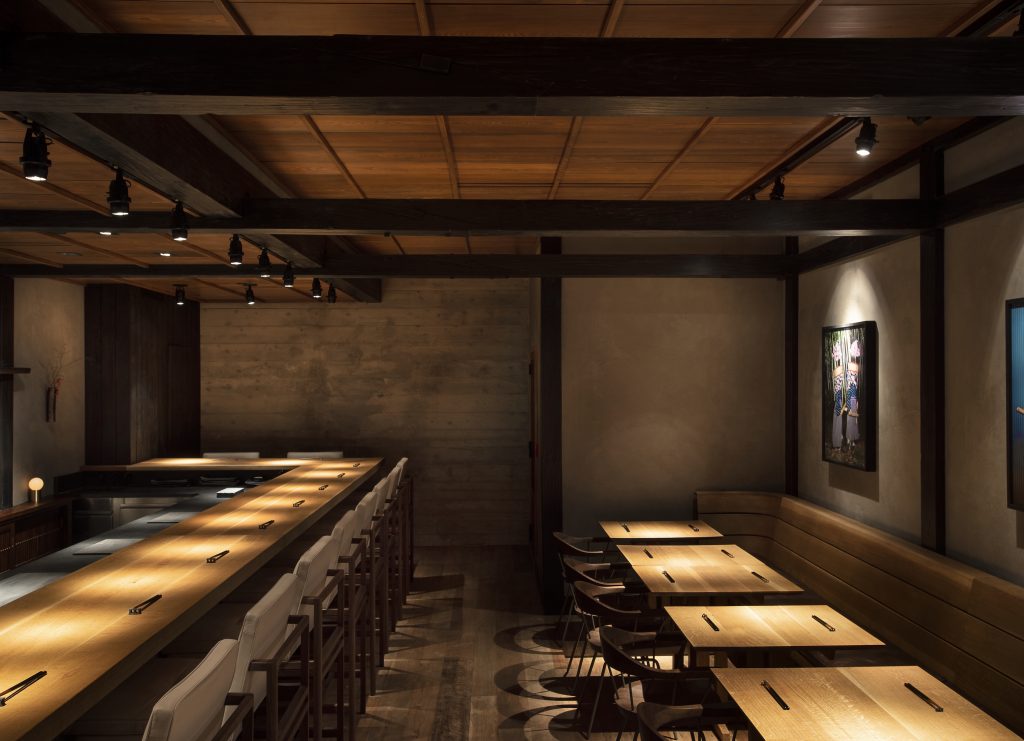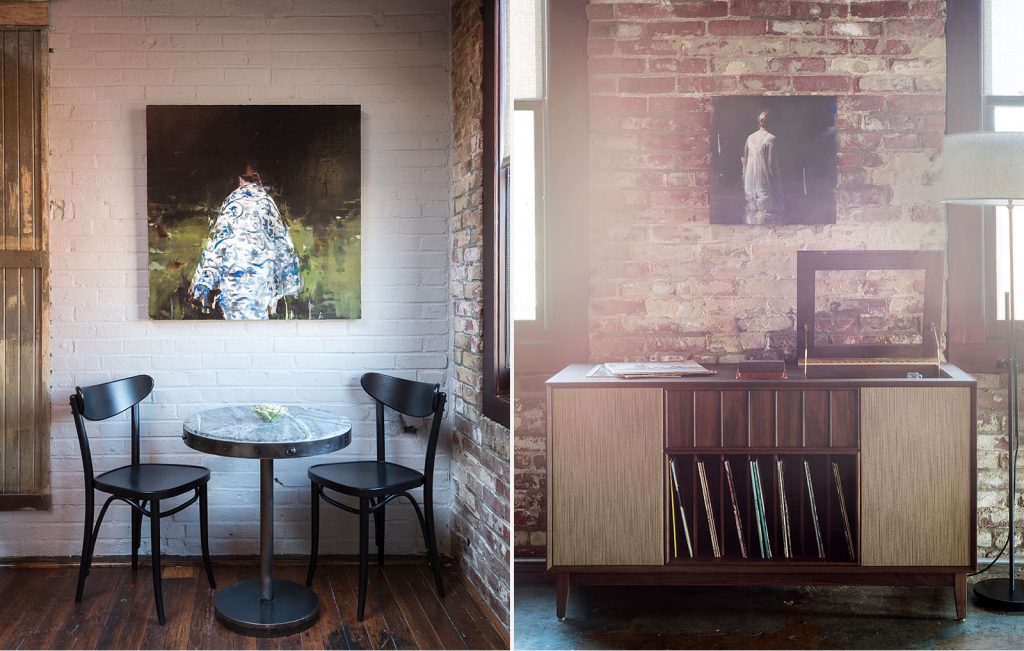Three Unique Offerings at Wm. Mulherin’s Sons + HIROKI, Philadelphia
Four bedrooms, two restaurants and exquisite design

In Philadelphia‘s Fishtown neighborhood, by the Market-Frankford Line train, a building that used to be a 19th century whiskey-blending and bottling factory (and later a motorcycle repair shop) is now the glorious Wm. Mulherin’s Sons. Inside, visitors find a stunning four-bedroom hotel and two restaurants. Each of the three offerings could not be more different—especially the two restaurants, Wm. Mulherin’s Sons and just-opened HIROKI.

The Wm. Mulherin’s Sons restaurant is a bright, airy and Italian-inspired space that’s a local favorite for wood-fired pizzas and big brunches. HIROKI is another story. “I think ‘transcendence’ is the key word for HIROKI,” Daniel Olsovsky (Creative Director at Method Co, which owns and runs the property) tells us. “While Mulherin’s hotel vibes are more ‘sex, drugs and rock’n’roll.'”

Opened in June, HIROKI is named for its chef, Hiroki Fujiyama (who worked with Masaharu Morimoto at Philadelphia’s Morimoto for a decade). HIROKI offers sophisticated omakase-style dining. The exterior is drastically different than the rest of the Wm. Mulherin’s Sons building—it’s Brutalist in style, with a grand 10-foot entry door that was made locally, by hand, in the ancient Japanese technique of Yakisugi. Inside, it’s dimly lit, with a neutral but warm palette, and exposed beams—all inspired by Gion, a district in Kyoto.

Many concepts for the restaurant came from Olsovsky and Fujiyama’s travels together in Japan. “Hiroki was born and raised in Kyoto, where we spent a majority of our time,” Olsovsky says. “We really didn’t have an agenda for the most part. I brought a Leica camera and documented the whole thing… The trip was completely life-changing. We did everything from visiting with fish purveyors at 4AM in the Tsukiji Market to taking an eight-hour trip to a rural sake distillery in the mountains of Yamaguchi Prefecture. The interior design and architecture inspiration was pulled from the most visible representation of old Kyoto, that still exists today in the form of thousands of traditional machiya-style houses dotting the cityscape.”

Method Co worked with Stokes Architecture on decor that features reclaimed Southeast Asian teak flooring, along with subtle use of raw concrete, bronze and stone. The result is subdued, but rich. “Being obsessed with design details matters,” Olsovsky says. “A dense visual identity and language matter. Now combine that with a killer architecture firm, and you’re able to build a symbolic marker. We wanted to remind those who enter to come into the present moment.”
With just 26 seats (14 at tables and 12 at the counter) and several chefs at work, the vibe for the 20-course omakase dining sessions (two per night) is buzzing. Each course—from zensai to crispy tilefish—is a little adventure, and the wine and sake pairings are generous. Music is also intrinsic to HIROKI. Olsovsky tells us, “I pulled a ton of inspiration from hidden record bars in Tokyo and Kyoto. The music narrative is built around the notion of East vs West—Japanese psychedelia meets the Summer of Love. Ultimately, the music should take you on a journey. A transcendental mix of pastoral folk, psychedelic ragas, cosmic vibes, sitar-heavy gnarly ’70s rock, transposed to a soulful Japanese landscape.”

Upstairs, the hotel also focuses on music, with custom-made record players and plenty of vinyl included in all four of the massive rooms. Each feels like an apartment, rather than a hotel suite: there’s no lobby, no concierge and every room has fully functioning kitchens, washers and dryers, and more. Plus, there’s so much light and space (they average 725 square feet), records to play and books to read, that guests will want to spend plenty of time there. With polished concrete floors, exposed brick, antique rugs, original artwork, and custom wallpaper by artist Stacey Rozich, the hotel is deliciously decorated with many nods to mid-century modernism.

“Each room is really romantic and tell their own stories. We tried to restore and keep as many details as possible but also layer in more modern touches like custom-designed wallpaper, furniture, walnut frameless kitchen cabinets and soapstone countertops,” Olsovsky says. From the hotel to the two restaurants, Olsovsky explains that despite their differences, there’s a strong commonality, saying, “We believe good design is timeless design.”
Images by Matthew Williams












